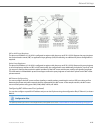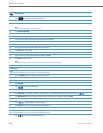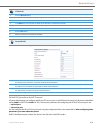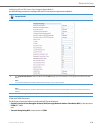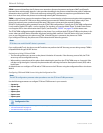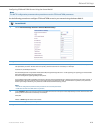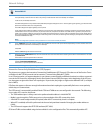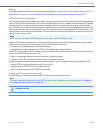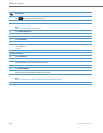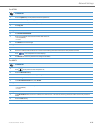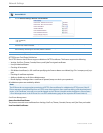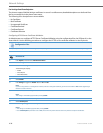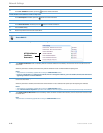
Network Settings
41-001343-02 REV04 – 05.2014 4-33
Reference
To configure STUN and TURN (which automatically enables ICE), see “Configuring STUN and TURN Servers Using the Con-
figuration Files” on page4-30 and “Configuring STUN and TURN Servers Using the Aastra Web UI” on page4-31.
HTTPS Client/Server Configuration
HTTPS is a Web protocol that encrypts and decrypts user page requests as well as the pages that are returned by the Web
server. HTTPS uses Secure Socket Layer (SSL) or Transport Layer Security (TLS) as a sublayer under its regular HTTP applica-
tion layering. SSL is a commonly-used protocol for managing the security of a message transmission on the Internet.
It
uses a 40-bit key size for the RC4 stream encryption algorithm, which is considered an adequate degree of encryption for
commercial exchange. TLS is a protocol that ensures privacy between communicating applications and their users on the
Internet. When a server and client communicate, TLS ensures that no third party may eavesdrop or tamper with any mes-
sage. TLS is the successor to SSL.
When an HTTPS client opens and closes its TCP socket, the SSL software respectively handshakes upon opening and dis-
connects upon closing from the HTTPS server. The main HTTPS client functions are:
• Downloading of configuration files and firmware images.
• Downloading of script files based on an “HTTPS://” URL supplied by a softkey definition.
The HTTPS server provides HTTP functionality over secure connections. It coexists with the HTTP server but has its own set
of tasks. The main HTTPS server functions are:
• Delivery of web page content to a browser client over a secure connection.
• Execution of HTTP GET and POST requests received over a secure connection.
Using the configuration files, the IP phone UI, or the Aastra Web UI, you can configure the following regarding HTTPS:
• Specify HTTPS security client method to use (TSLv1 or SSLv3)
• Enable or disable HTTP to HTTPS server redirect function
• HTTPS server blocking of XML HTTP POSTS to the phone
Configuring HTTPS Client and Server Settings
Use the following procedures to configure the HTTPS client and server for the IP phones.
Note:
HTTPS uses port 443 instead of HTTP port 80 in its interactions with the TCP/IP lower layer.
Note:
To enable or disable the IP phones to use the HTTPS protocol as the configuration server, see the section, “Configuring
the Configuration Server Protocol” on page4-87.
Configuration Files
For specific parameters you can set in the configuration files, see Appendix A, the section, “HTTPS Client and Server Settings” on pageA-30.



